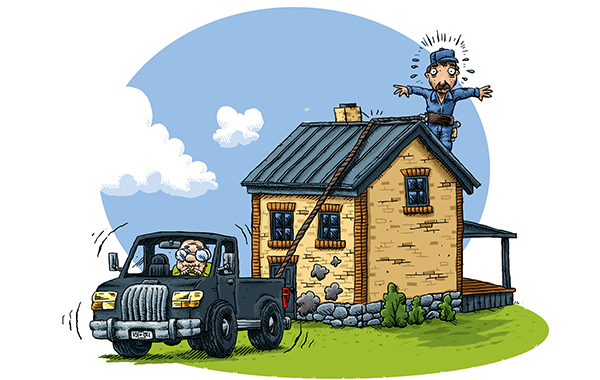
Dave Gray
From the Archives: The Doh! Moment
Renovation ContractorUsing safety equipment is important. But using it properly is even more important, as Allan McPherson almost found out the very hard way.
Submitted by Allan McPherson, R.T. Warwick Construction, Perth, Ont.
Using safety equipment is important. But using it properly is even more important, as Allan McPherson almost found out the very hard way.
Years ago, during an interior reno on an old two-storey farmhouse, the homeowner asked my boss to check for a leak around a chimney on the roof. I volunteered to climb the steep, slippery roof with a belt-type safety harness and a rope thrown over the peak to a secure anchoring spot. My boss assured me the rope was safe, as he had tied it to the bumper of his truck.
I was halfway to the peak when I heard the truck start. My boss had left the keys in the unlocked truck and the near-sighted homeowner, seeing it parked on his unmarked septic tank, proceeded to move it, not noticing the attached rope.
My fingers scratched open the belt buckle just in time to see the rope and belt disappear over the ridge. Funny now; not quite so funny then.
Lesson Learned: Pack your own parachute! Whenever setting up to do some extra risky task with ladders, scaffolding, planking, or harness work, check out every aspect of it yourself.
While we don’t run the Doh! Moment contest any more, we do want to hear about your time-saving tips on the jobsite for our current, Work Smart, Not Hard column. Send your ideas to allan@renocontractor.ca and you could win a great prize from DeWalt, like this T-Stak radio and charger worth $299.

